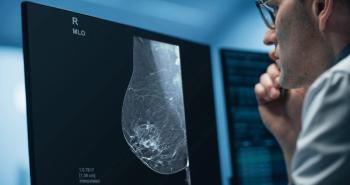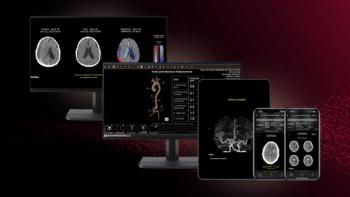
Stanford MDCT conference: Siemens unveils thin-client server for high-performance CTs
As if one CT imaging chain were not enough to swamp an IT network, Siemens Medical Solutions has added a second to its Somatom Definition, turning an everyday headache into a migraine. But the company has come up with a remedy, a thin-client server called syngo WebSpace.
As if one CT imaging chain were not enough to swamp an IT network, Siemens Medical Solutions has added a second to its Somatom Definition, turning an everyday headache into a migraine. But the company has come up with a remedy, a thin-client server called syngo WebSpace.
The new product, which Siemens unveiled at Stanford's International Symposium on Multidetector-Row CT this week in San Francisco, turns any PC into a high-performance CT workstation with advanced 3D visualization and processing tools, including vessel quantification and bone removal. Because WebSpace reads data directly from the dual-source CT scanner, it can serve as an interim data storage device, which may be especially attractive to owners of this CT, which generates twice the number of slices per rotation of the most advanced competing CTs: 128 versus 64.
"You won't have to push the data right away to your PACS; it can work as a communications tool between departments, bringing the interdisciplinary people together without having to bring in a PACS," said Bernd Ohnesorge, vice president of Siemens global CT marketing and sales.
WebSpace will be installed at three sites this summer. Production units are set to begin shipping in fall.
The new product, which Siemens will start selling next week, is designed specifically for use on the Somatom Definition, although future versions will be compatible with other CT scanners, including ones from other manufacturers. Siemens engineers are drafting a plan to allow direct writing capability for all the company's high-end CTs in the near future. Others will have to use a DICOM link.
"We are providing a direct connection to our CT scanners, starting with the Somatom Definition, where there is the possibility to directly write the data in real-time off the scanner," Ohnesorge said "From there, you can use the server as storage for the CT data and then access the data with advanced reading tools throughout the enterprise."
At present, Siemens has installed just eight Definition CTs, two of which are in the U.S. This number will grow rapidly, however, according to Ohnesorge, who predicts 150 will be installed worldwide by the end of this year.
For these and other users of WebSpace, the thin-client server will come in three configurations. Distinctions are based on the number of users who can process data simultaneously. WebSpace Expert will allow five concurrent users. WebSpace Department will support 10. WebSpace Clinic will handle 20. More extensive installations are possible, but only if more than one server is installed, Ohnesorge said.
"It will be important to look at how to integrate WebSpace with PACS reading workstations," he said. "We will be looking at this with our colleagues in the Siemens PACS department - how to integrate them, how to turn a PACS workstation into a 3D workspace."
Before this can happen, Siemens must figure out the workflow to integrate reading on a PACS with the advanced reading tools available on WebSpace, Ohnesorge said.
Newsletter
Stay at the forefront of radiology with the Diagnostic Imaging newsletter, delivering the latest news, clinical insights, and imaging advancements for today’s radiologists.




























